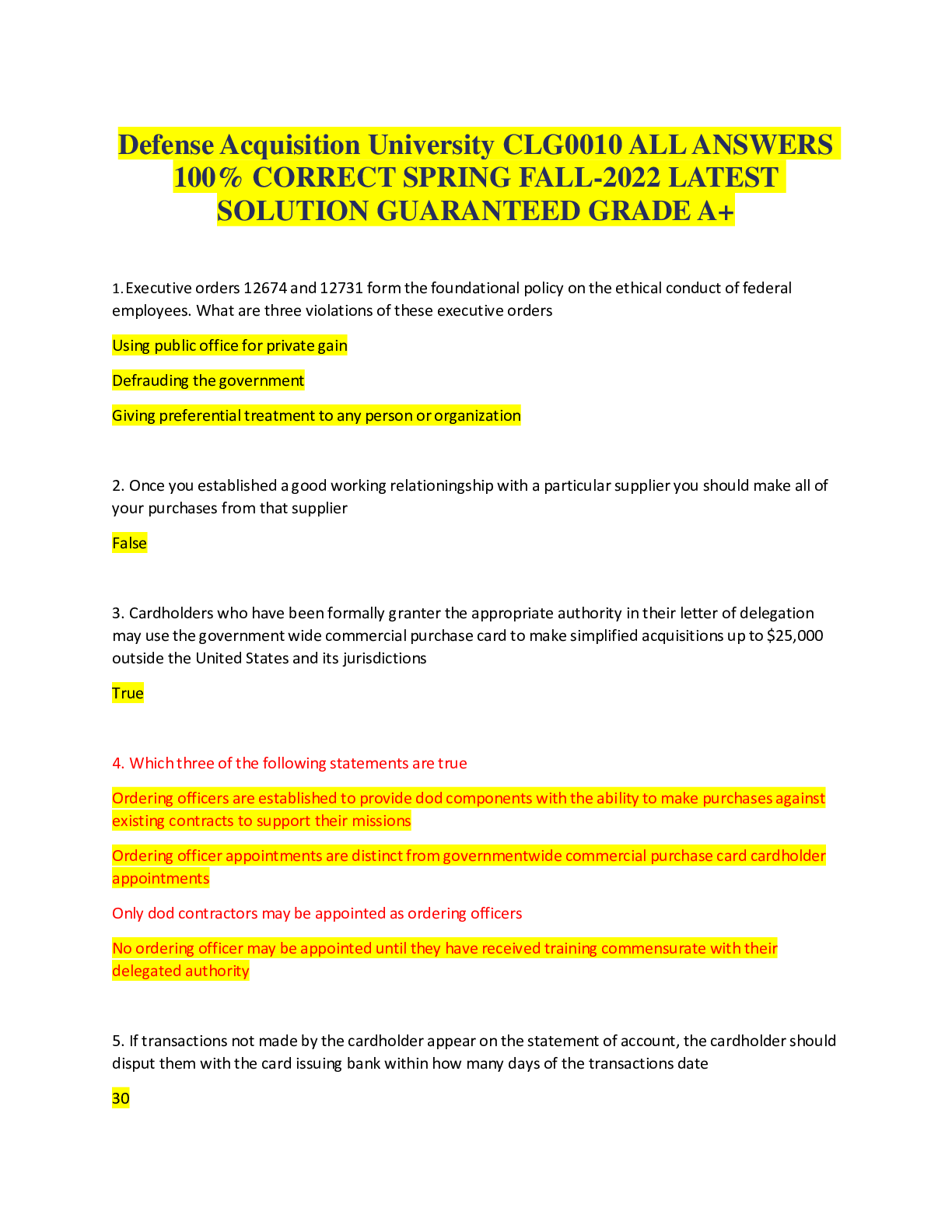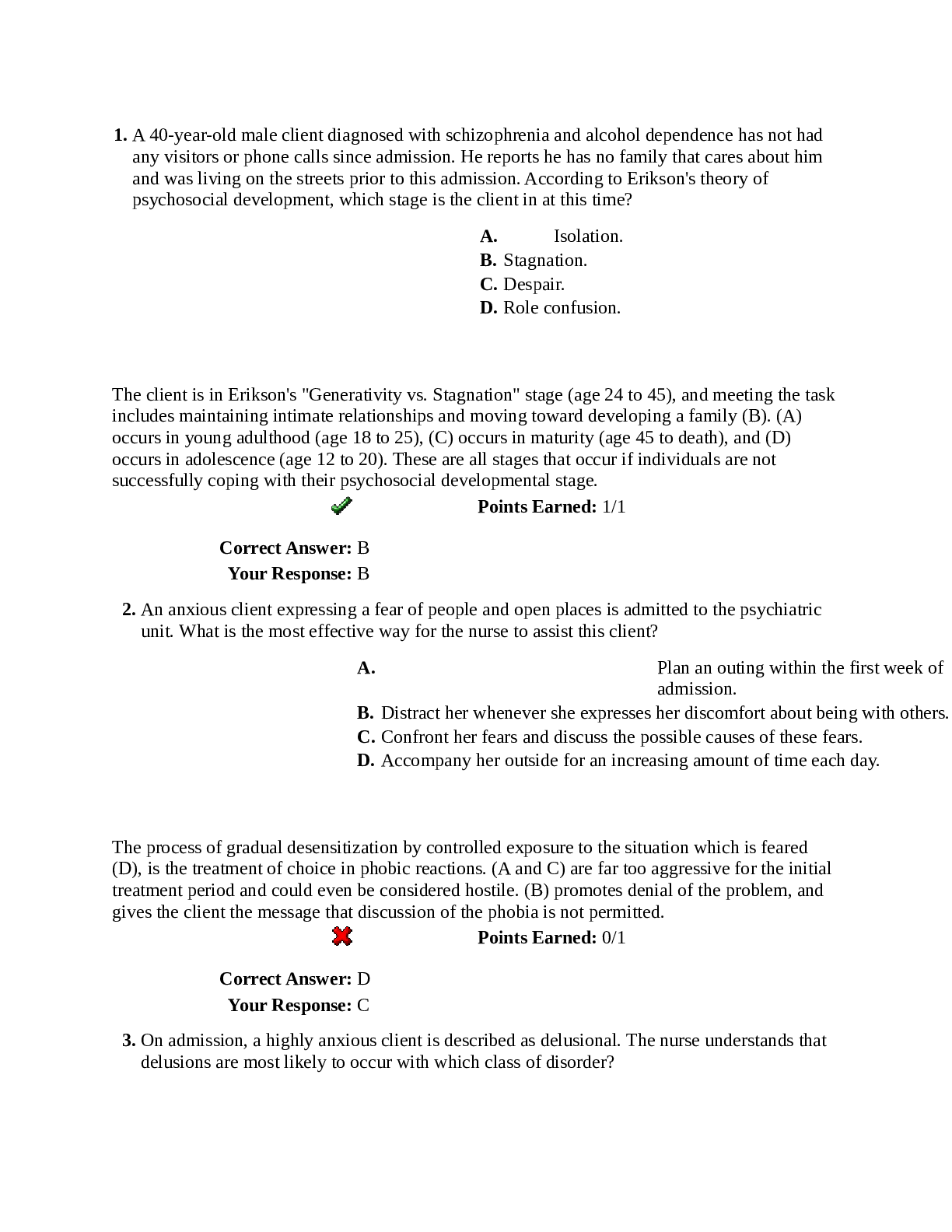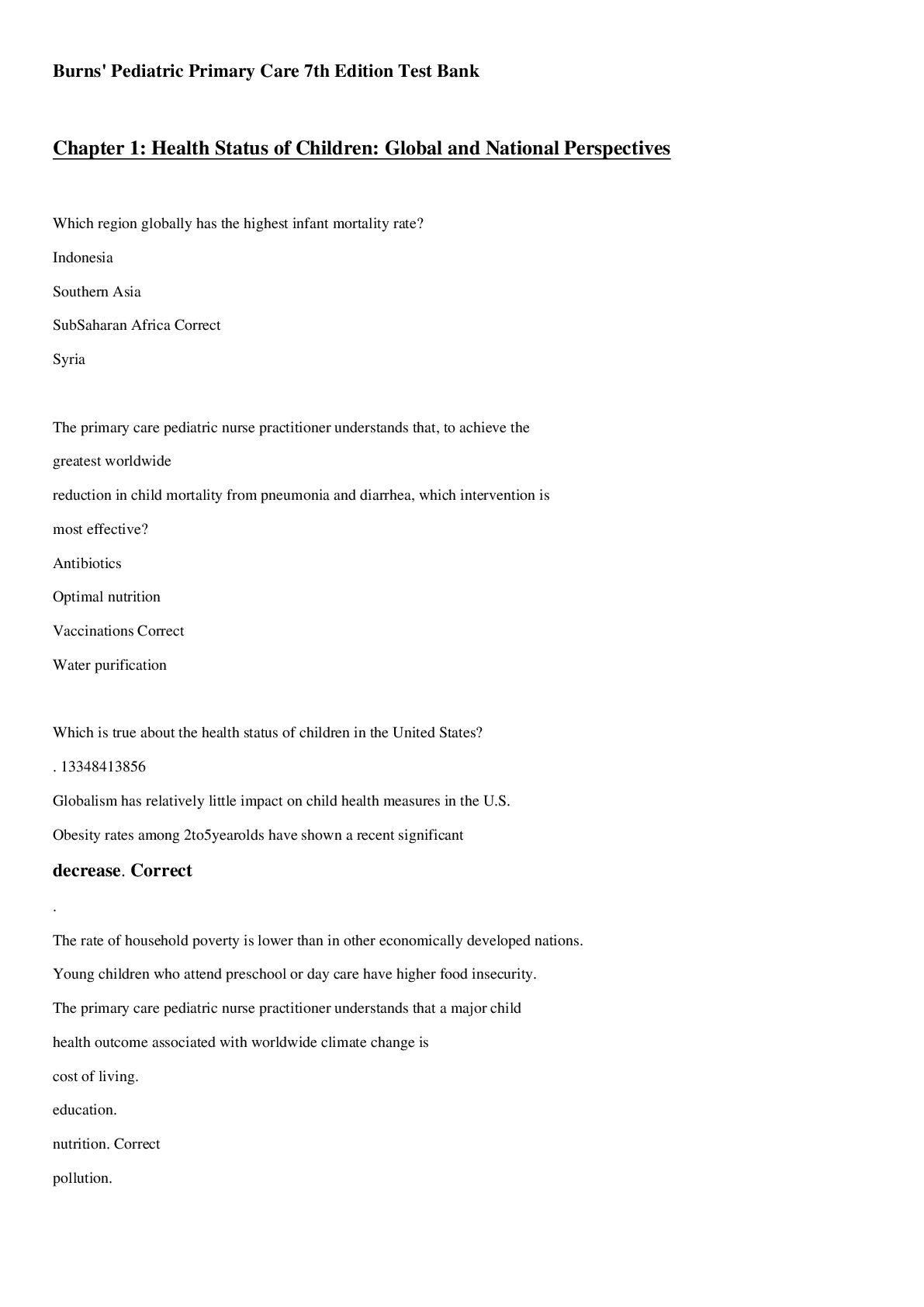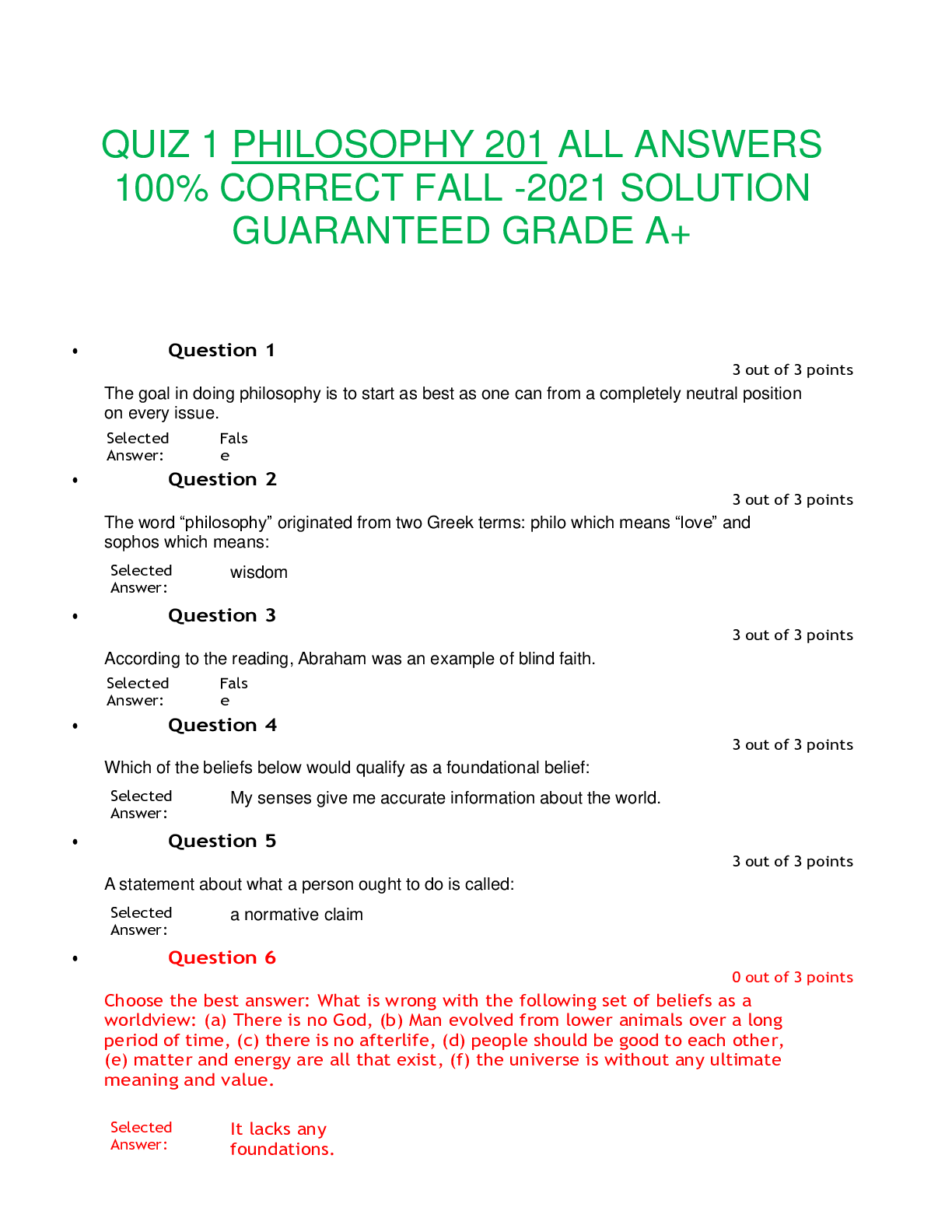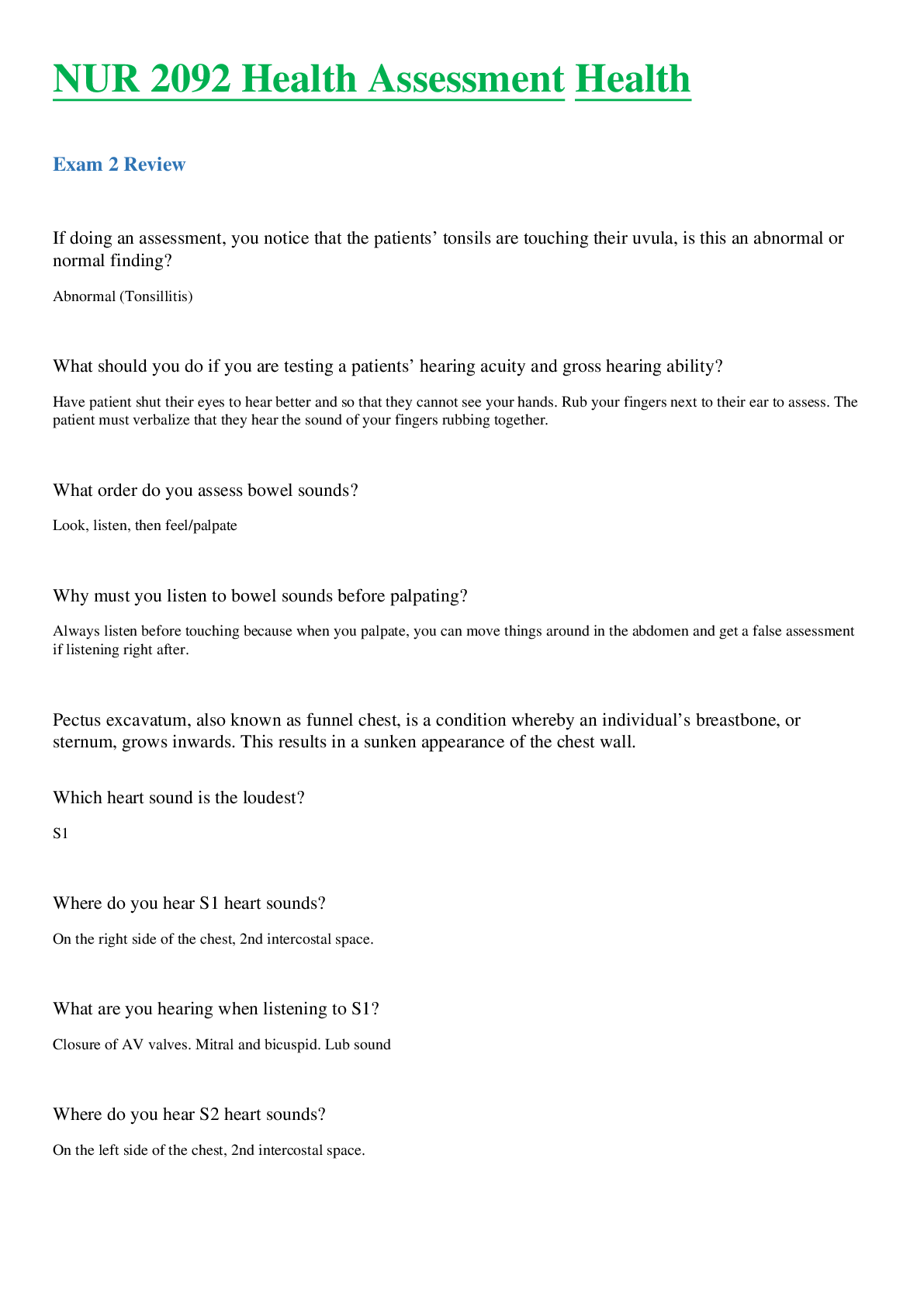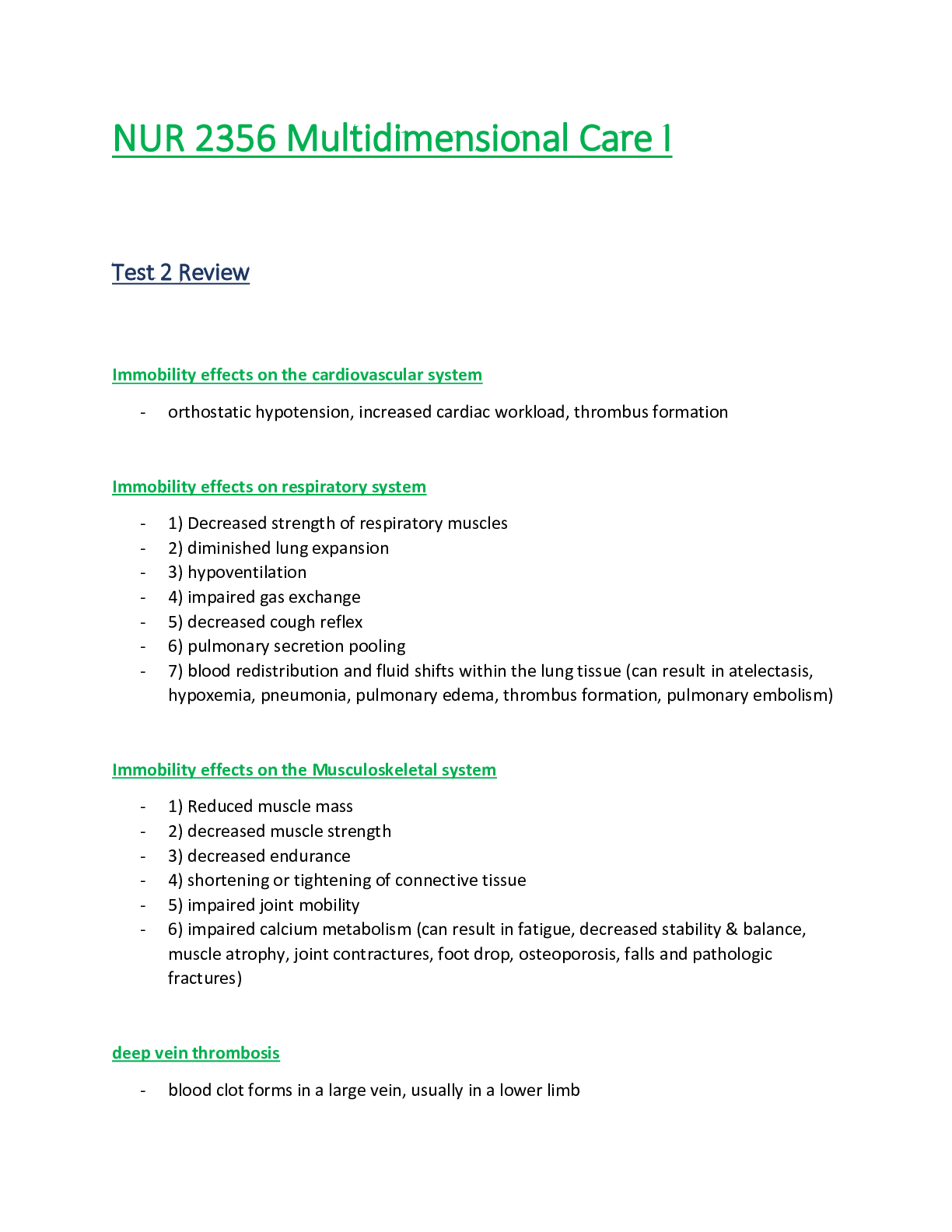Health Care > EXAM REVIEW > Final Exams Concepts ALL CORRECT ANSWERS 100% SOLUTION FALL -2021 EDITION GUARANTEED GRADE A+ (All)
Final Exams Concepts ALL CORRECT ANSWERS 100% SOLUTION FALL -2021 EDITION GUARANTEED GRADE A+
Document Content and Description Below
1. Know the difference between subjective and objective data. (I will scream if you all get these wrong! :)) • Subjective: What a person says about themselves o Example: “My BP was 118/90 yeste ... rday” and pain • Objective: What you observe through measurement, inspection, palpation, percussion, and auscultation o Examples: Meter readings, vital signs, and measurements 2. Barriers to communication. What are they? • The use of jargon • Emotional barriers and taboo • Lack of attention, interest, distractions, or irrelevance to the receiver • Difference in viewpoint • Physical barriers to non-verbal communication • Physical or mental disabilities (Physical: Hearing problems. Mental: Down Syndrome) • Language differences and difficulty understanding unfamiliar accents • Cultural difference. 3. Traps of interviewing-Chapter 3 • Providing false assurance or reassurance • Giving unwanted advice • Using authority • Using avoidance language • Distancing • Using professional jargon • Using leading or bias questions • Talking too much • Interrupting • Using “why” questions 4.Open ended questions vs closed ended questions. Know the difference and when to use them during the interview process. • Open ended: Questions asking for narrative information o When to use them: ▪ Use it to begin the interview ▪ Introduce a new section of questions ▪ Whenever the person introduces a new topic • Closed (direct) questions: Asking for specific information. Elicit a short, one- or two-word answer, a “yes” or “no” or a forced choice. o Used in an emergengy to obtain information quickly 5. Components of a Health History -Chapter 4. Know this Chapter!! • Initial information • Chief complaint • Past medical history • Family history • Social history • Review of systems • Physical exam 6. General survey and what it consists of. • Initial inspection • Observe posture • Hygeine • Facial expression • Assess breathing • Behaviors • Body language o Appearance o Body Structure and mobility o Behavior 7. Skills requisite of physical exam. Chapter 8. Know the correct order for assessment. (Inspection, palpation etc). Know the different order for abdominal exam. • Order: o Inspect o Palpation o Percussion o Auscultation ▪ Abdomen: • Inspect • Auscultation • Percussion • Palpation 8. Know the normal range of respirations. Above and below that range, what's it called? • Normal Range: 12-20(21) • Dyspnea: Shortness of breath; < 12 • Tachypnea: Abnormally rapid breathing; >21 9. Lung sounds- Know difference between normal vs abnormal and where they are heard. 10. Characteristics of pulse and how to document it. • Rhythm: Normal regular, even tempo o Rating: ▪ Force: • 3+: Full, bounding • 2+: Normal • 1+: Weak, thread • 0: Absent 11. Blood pressure cuff sizes and impact on blood pressure readings. • Cuff sizes: o Too small: Falsely high BP due to extra pressure to compress artery o Too large: Falsely low BP due to not being able to cut off blood vessel properly 12. Changes in blood pressure in the elderly caused by what? 13. Assessment of ALL pulses and their locations. (Apical, radial, popliteal, etc) • Temporal • Carotid • Apical (5th ICS, L Mid clavicular) • Brachial • Radial • Femoral • Popliteal • Posterior Tibial • Dorsalis pedis 14. Carotid pulse- location and abnormality is called? 15. How does the physical assessment differ of newborn , toddler, adolescent and elderly. What is important to consider with each stage? What to do differently when performing exam with each age group? 16. Diastolic vs Systolic. Know the differences. • Systolic: Pressure is maximum pressure felt on the artery during left ventricular contraction • Diastolic: Pressure is the elastic recoil, resting, pressure that the blood exerts constantly between each contraction 17. What is PERRLA? 18. Psoriasis- what is it? Location on body commonly found? 19. Musculoskeletal -know different muscle movements. (Flexion, extension, etc) 20. Skin lesions- Malignant vs Non Malignant and their characteristics. 21. Know differences of Lordosis, Kyphosis, Scoliosis and Spondylosis. [Show More]
Last updated: 3 years ago
Preview 1 out of 18 pages
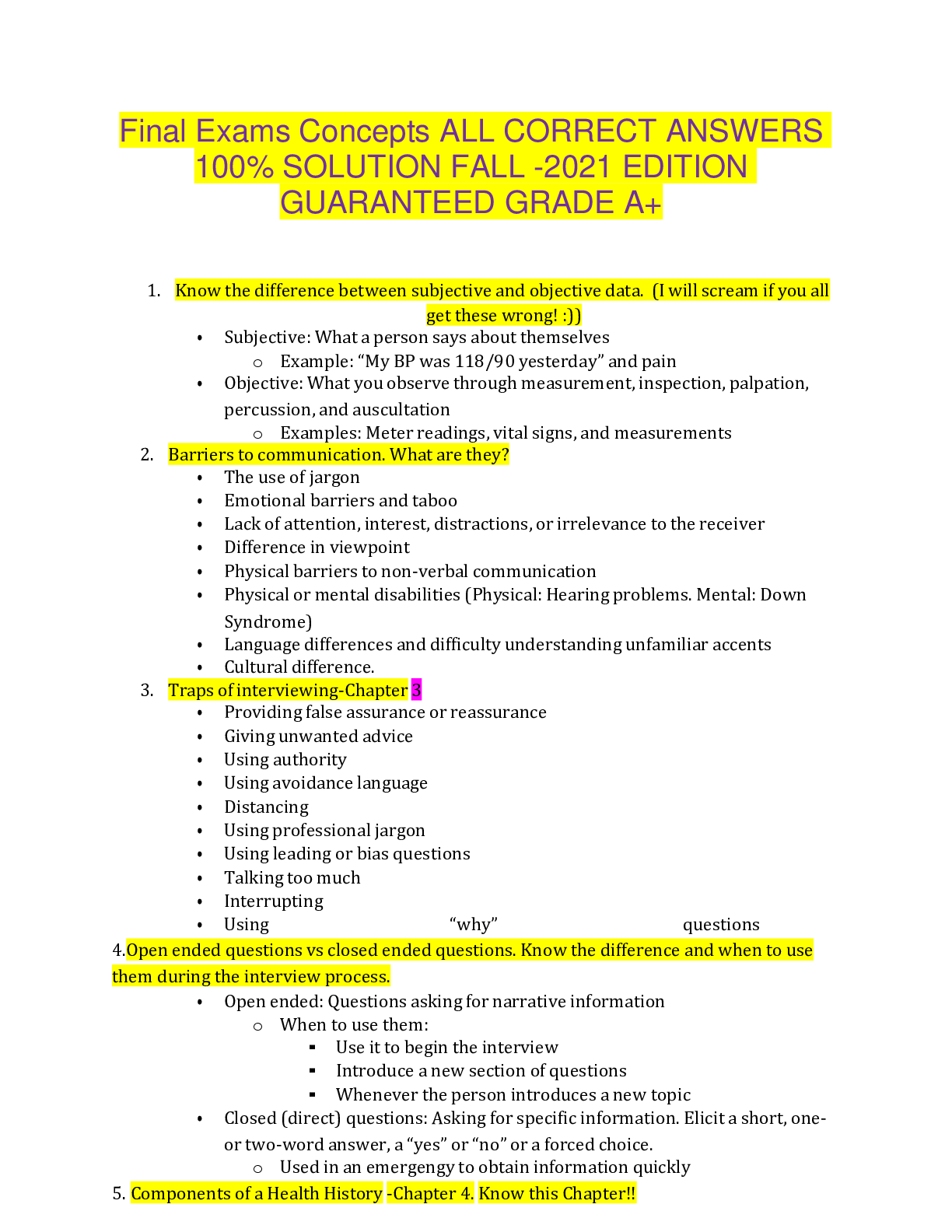
Buy this document to get the full access instantly
Instant Download Access after purchase
Buy NowInstant download
We Accept:

Reviews( 0 )
$15.50
Can't find what you want? Try our AI powered Search
Document information
Connected school, study & course
About the document
Uploaded On
Oct 22, 2021
Number of pages
18
Written in
All
Additional information
This document has been written for:
Uploaded
Oct 22, 2021
Downloads
0
Views
77


